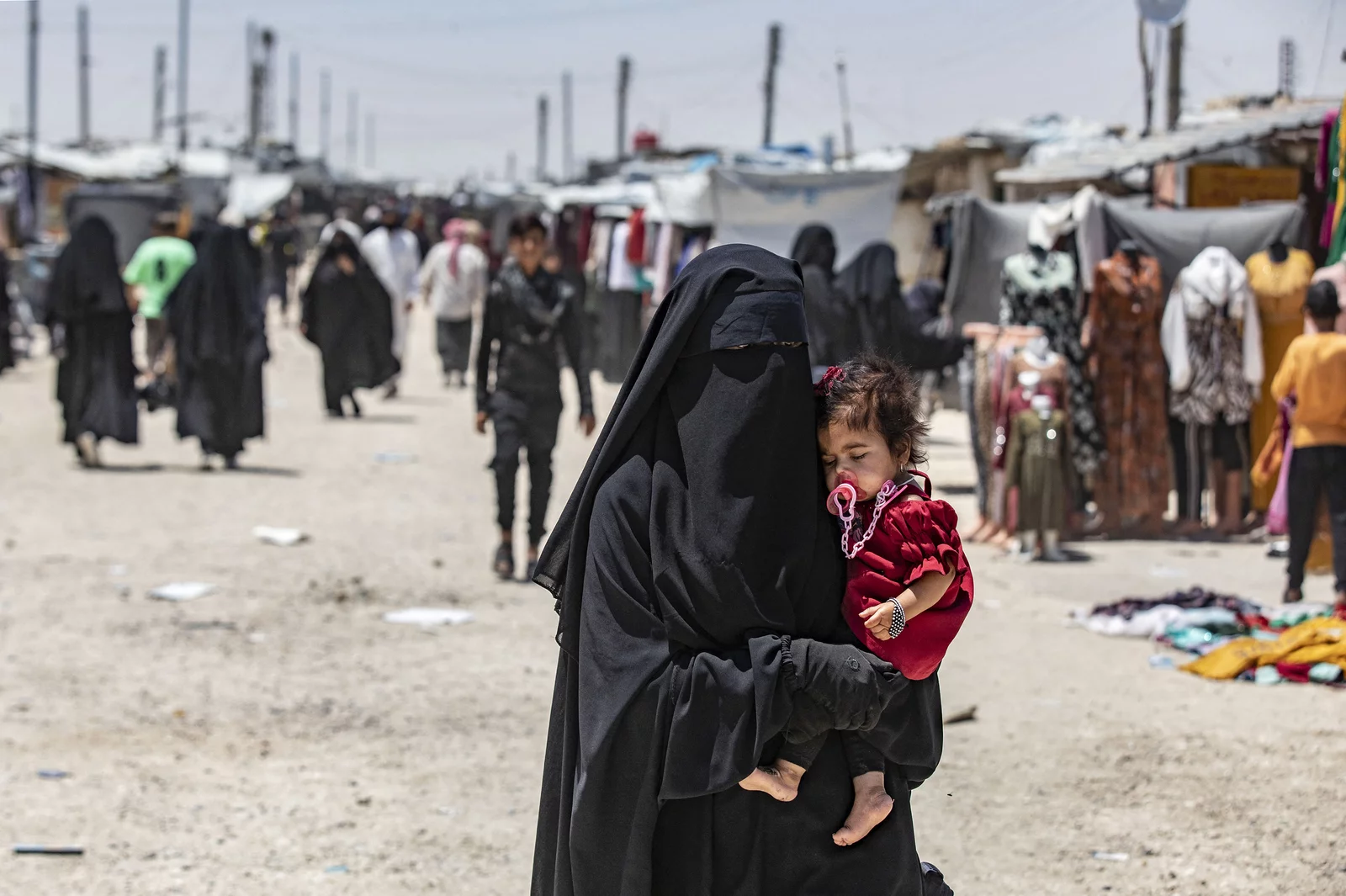Baghdad Pushes al-Hol Conference Amid Fears of Sunni Syria and ISIS Spillover

Iraq is stepping up its diplomatic campaign to address the crisis of al-Hol camp in northeast Syria, pressing for an international framework to dismantle the camp’s extremist cells and repatriate foreign nationals.
Context: Ali al-Hijimi, an official in Iraq’s Foreign Ministry, announced that invitations have been issued for a high-level international conference on al-Hol. The meeting is scheduled for September 26 in New York, on the sidelines of the UN General Assembly.
The stated aim of the conference is twofold: to press governments to take back their nationals and to disrupt the extremist networks that continue to operate inside the camp. Officials describe these networks as actively recruiting and indoctrinating children into the so-called “Cubs of the Caliphate.”
Iraq has already accelerated its own repatriation program. The latest transfer brought more than 800 Iraqis from al-Hol to al-Jadaa camp in Nineveh province, which serves as a transit and reintegration hub before families return to their original communities. This was the eleventh such repatriation convoy organized by Baghdad.
Data from the U.S. Department of State and the Office of the Inspector General (OIG) put al-Hol’s total population at 28,400. Of these:
- Iraqis: ~7,952 (28%)
- Syrians: ~14,484 (51%)
- Third-country nationals: ~5,964 (21%)
The U.S. military also reported earlier this month that more than 25,000 Iraqis have been repatriated from northeast Syria since 2021, noting that 80% of Iraqis previously held in al-Hol have now returned.
Al-Hol Camp Population
An estimated breakdown of the 28,400 individuals at the camp.
Source: U.S. Department of State and the Office of the Inspector General (OIG)
Analysis: Baghdad’s drive to internationalize the al-Hol file reflects more than just humanitarian concern. For Iraq, the camp is seen as a potential springboard for ISIS’s revival, especially as Syria itself enters a period of deep political transition after the collapse of Assad’s regime. Iraqi officials fear that if al-Hol remains under loosely monitored SDF control, cells operating inside the camp could spill over into Iraq at a moment when sectarian tensions and electoral rivalries already strain internal stability.
Al-Hol also sits at the center of a wider geopolitical struggle. For the Syrian Democratic Forces, the camp—along with the network of detention facilities holding around 12,000 ISIS-linked foreign nationals—has been one of their strongest bargaining chips with the U.S. and its allies. Roughly 3,000 of those detainees are foreign ISIS fighters, with another 9,000 being their wives and children. European states in particular have refused large-scale repatriations, leaving the SDF to position itself as the world’s frontline defense against ISIS, a posture that has earned it sustained Western backing.
But the SDF’s insistence that neither the camps nor the prisons be handed over to Damascus has become politically fraught. If Damascus were to take control of these facilities, it would require reintroducing regime-affiliated forces into Hasakah and Raqqa—areas now firmly under SDF control—undermining the group’s leverage in ongoing talks over its future. Pro-SDF voices sometimes raise the prospect of a “Peshmerga-style” arrangement, with the SDF functioning as the autonomous military of a federal northeast Syria. Yet the political environment is far less accommodating. Arabs make up a majority of the SDF’s rank-and-file, and the group’s Kurdish backbone, the YPG, is openly described by U.S. envoy Tom Barrack as a PKK offshoot—an assessment that aligns Washington more closely with Ankara’s red lines than with Kurdish aspirations.

For Iraq, the al-Hol issue is not just about preventing an ISIS resurgence in the abstract. It is about shoring up its western flank at a moment when the regional balance has shifted dramatically. With Assad gone and a new Sunni-led, anti-Iran Syria emerging on its border, Baghdad—under a pro-Iran government—sees any loose security threat in northeast Syria as a potential tool that could be exploited against it. In this view, al-Hol represents a vulnerable entry point: a camp filled with thousands of radicalized families, foreign fighters, and transnational networks that could be mobilized to destabilize Iraq’s Sunni-majority provinces.
This fear has also been articulated by Tehran. During a recent visit to Baghdad, Iran’s Ali Larijani warned Iraqi leaders of the movement of foreign fighters from Syria into Iraq’s north and west. He cautioned that such flows could lay the groundwork for the creation of an “autonomous Sunni region” that would not only fracture Iraq but also serve as a staging ground for exporting militants into Iran itself.









